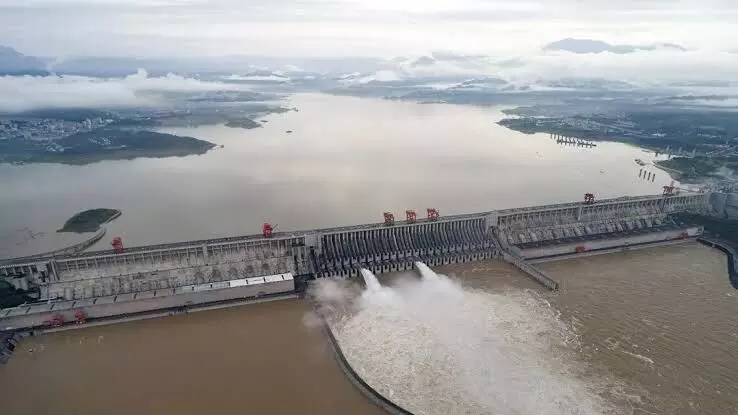Weaponising Water: The Siang Dam, China’s Moves, and India’s Strategic Dilemma

The unfolding events in Arunachal Pradesh around the Siang Multipurpose Dam Project (SMDP) and the Chinese decision to dismantle over 300 dams in their own territory to protect a rare river fish highlight how water has become a frontline in the geopolitical and strategic contest between India and China.
Siang Dam and PMO’s Intervention
The Indian government’s proposed Siang dam project, with a planned capacity of over 57,000 MW, is India’s largest green energy initiative to date. Situated on the Siang River (the Brahmaputra in Assam and and the Yarlung Tsangpo in Tibet), the project aims to meet India’s growing power needs while asserting its presence in a strategic and disputed region.
However, the project has created deep anxieties among the local tribes, especially the Tani people who inhabit the banks of the Siang. Their fears stem from displacement, loss of traditional lands, cultural erosion, and ecological destruction.
The PMO’s high-level meeting signals that New Delhi recognises the domestic unrest and also the potential for these protests to be exploited by external actors, particularly China, which has a history of supporting anti-India movements in the northeast.
China’s Calculated Moves
In a striking contrast, China announced it would dismantle over 300 dams in Yunnan and elsewhere to protect endangered riverine species. This move is partly ecological, partly aimed at soft-power projection to the world — portraying itself as a responsible environmental steward.
But in parallel, China continues to build huge dams on the Yarlung Tsangpo/Brahmaputra upstream of India, gaining leverage over the flow of the river into India.
By controlling the Tibetan Plateau — the source of all major Indian rivers — Beijing effectively holds a hydrological advantage in the region.
Water as a Weapon
Water is emerging as a new weapon in the global order — not just as a resource but as a strategic tool. China has already demonstrated how controlling river flows can exert pressure on downstream nations in Southeast Asia, and the same is feared for India. The SMDP is both India’s response to this threat and a way to counterbalance China’s hydro-dominance.
The Rise of the United Tani Army
Adding a new layer of complexity, a newly formed armed group, the United Tani Army, has surfaced among the Tani-speaking tribes of Arunachal Pradesh. Unlike earlier insurgent groups that demanded autonomy or secession, this group’s demand is economic and environmental: to halt the construction of all dams in the region.
This represents a shift — insurgency now being used to target India’s green energy ambitions and development projects, which aligns suspiciously well with Chinese interests in preventing India from asserting control over the strategic northeast.
Geopolitical Underpinnings
While India and China maintain a cordial diplomatic relationship on the surface, both sides remain deeply suspicious of each other. Their moves in the northeast and Tibet are highly calculated.
China’s support for ethnic insurgencies in India — whether through the ULFA, NSCN factions, or now possibly the UTA — is part of its strategy to keep India distracted internally.
The backdrop of personalities and events — the Dalai Lama’s presence in India (a sore point for Beijing), Paresh Baruah’s long insurgency from across the border, and now the weaponisation of water — makes the region more volatile.
The PMO faces a dual challenge:
Addressing domestic unrest and environmental concerns over the Siang project.
Countering external manipulation and protecting India’s strategic interests in the northeast.
This requires delicate balancing: engaging the local tribes meaningfully while sending a clear signal to China that India will not cede its strategic space.
In this fragile theatre, water is no longer just a source of life but a strategic asset.
